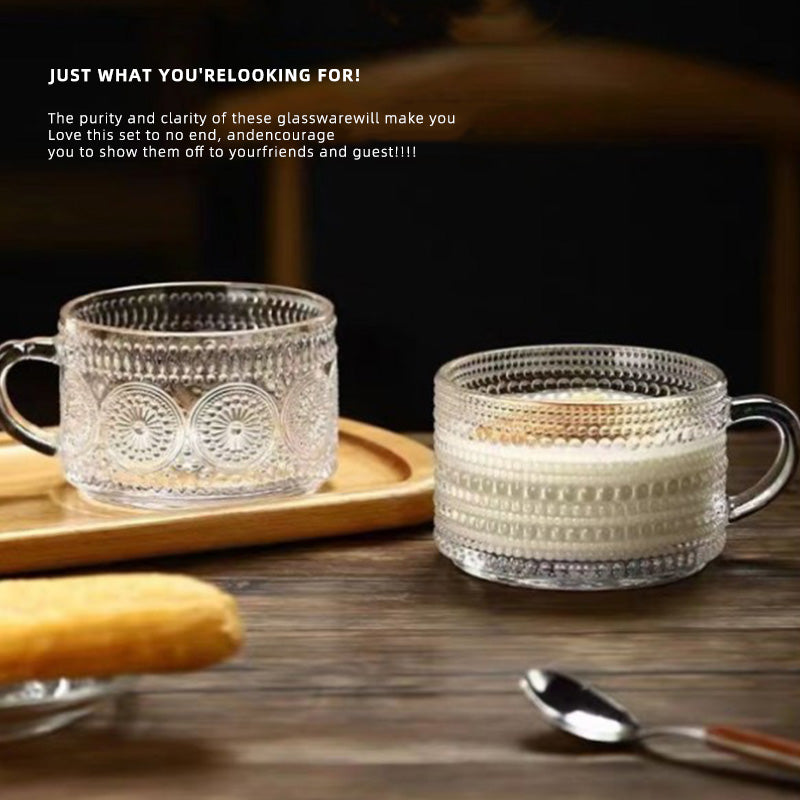
The Design and Manufacturing Process of Glass Cups
- Design Creativity and Inspiration
The design of glass cups is a process brimming with creativity and artistic inspiration. Designers typically find inspiration from several sources:
- Natural Elements: Shapes and textures from nature, such as waves, leaves, and flowers, often inspire designers. These natural elements can be transformed into unique shapes and decorative patterns for glass cups.
- Culture and History: Artistic styles from different cultures and historical periods, such as classical Roman and Greek designs, Eastern Zen aesthetics, and modern minimalism, all influence glass cup designs.
- Functional Requirements: Designers also consider the practical usage scenarios and functional requirements of glass cups, like wide-bellied wine glasses to aid in aerating wine, and thick-walled beer glasses to maintain temperature.

- Manufacturing Techniques
The manufacturing of glass cups can be categorized into hand-blown and machine-made methods, each with its unique characteristics and pros and cons.
Hand-blown Glass
Hand-blown glass is an ancient and traditional technique, with the following main steps:
- Melting Glass: Glass materials are heated to a liquid state in a high-temperature furnace.
- Blowing and Shaping: Craftsmen use a blowpipe to blow air into the liquid glass and control its shape by rotating and blowing.
-Finishing and Cooling: Various tools are used to refine the glass, adding details and decorative patterns, followed by slowly cooling the finished product in an annealing oven to prevent cracking during cooling.
Hand-blown glass cups are often unique and hold artistic value, with each piece being one-of-a-kind. However, they are more costly to produce and are suited for high-end customization and art collections.


Machine-made Glass
Machine-made glass cups are a modern production technique, involving the following steps:
- Melting and Injection Molding: Glass materials are melted in a high-temperature furnace and then shaped using molds.
- Mechanical Processing: Automated machinery is used for cutting, polishing, and decorating the glass cups.
-Annealing and Inspection: After slowly cooling in an annealing oven, the products undergo strict quality inspections to ensure standardization and uniformity.
Machine-made glass cups offer the advantages of efficiency, low cost, and standardization, making them suitable for mass production and widely used in everyday life.


- Sources of Creative Inspiration for Designers
Designers' creative inspiration can come from various channels:
- Observation and Experience: By observing details in everyday life and experiencing different environments and cultures, designers can capture sparks of inspiration.
- Art and Exhibitions: Visiting art exhibitions, museums, and design shows can stimulate designers' creative thinking and broaden their horizons.
- Communication and Collaboration: Interacting and collaborating with other designers, craftsmen, and clients can lead to new design ideas and creative sparks.
The design and manufacturing process of glass cups is a combination of artistic creativity and technical craftsmanship. Whether it’s the unique art pieces of hand-blown glass or the standardized products of machine production, each glass cup embodies the wisdom and effort of designers and craftsmen. Understanding these processes not only allows consumers to better appreciate and use glass cups but also to recognize the cultural and craftsmanship beauty they embody.












